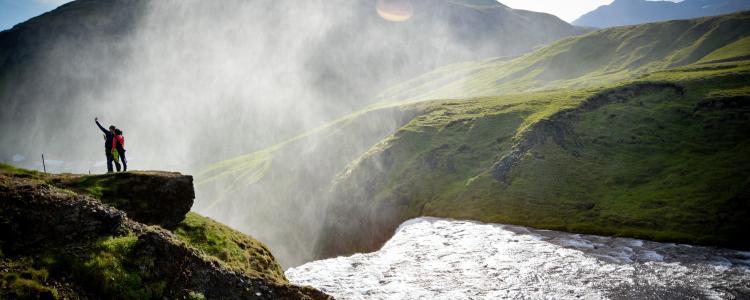Cold, wet, hot and dry. Don’t be surprised if you experience all of these conditions on a single trek especially on the mountains and hills. When you are walking your body will create a lot of heat when you stop you will cool down rapidly. Here are some top tips for temperature control and protection from the elements.
Layering
- Base layer – worn tight against the skin. Merino wool is best for base layers; both insulating and relatively quick drying to wick away the moisture created when you are exerting energy. It is also very breathable, however it is expensive. Man made fabrics (such as polypropylene) are quick drying, fast wicking, relatively thermal but can get a bit smelly unless treated with a bacteria killer. They usually offer good value.
- Mid layer – this can be a fleece or light weight jumper, breathable, but both these options can be bulky in your day bag. Better still is a light insulated jacket like our own Fuego jacket. Both have the advantage of being very windproof, highly insulating, remarkably packable and often warm enough unless the weather is extreme.
- Mid outer – if you think your trip could get very cold (the top of Kili, overnight on the Machu Pichu trail) you will also need this. I go for a down Gilet. They again are very packable and offer great insulation.
- Outer shell – this has got to be breathable, packable and 100% waterproof as you will probably only wear it when the weather closes in. For lowland trekking consider a poncho. It will cover you and your pack and is useful as a ground sheet when taking a break. Don’t forget to pack some lightweight water proof trousers.
Layering will only work if there is a layer of air between your layers. Warmth is created by you and is trapped between the layers and within the insulating clothing. If it is all too tight it simply will not work.
Choose the Right Fabric
For your general clothing try to avoid cotton if there is any chance of cold wet weather. It drys slowly. I wear cotton trousers as I prefer the feel but it is best to wear a synthetic top. This is because when you are wearing a day sack and are exerting yourself (generating heat) moisture will form underneath the bag because you have caused an occlusion. The trouble comes when you stop for a well earned break and take off your pack the colder air is likely to chill you.
Hats
Make sure you pack two hats for your trek. A wide brimmed hat will offer protection from the sun for your head and neck. An insulating hat is important as so much body heat escapes through the head. Making sure you keep that warmth in when trekking in cold climates is vital.


No Comments
Be the first to start a conversation